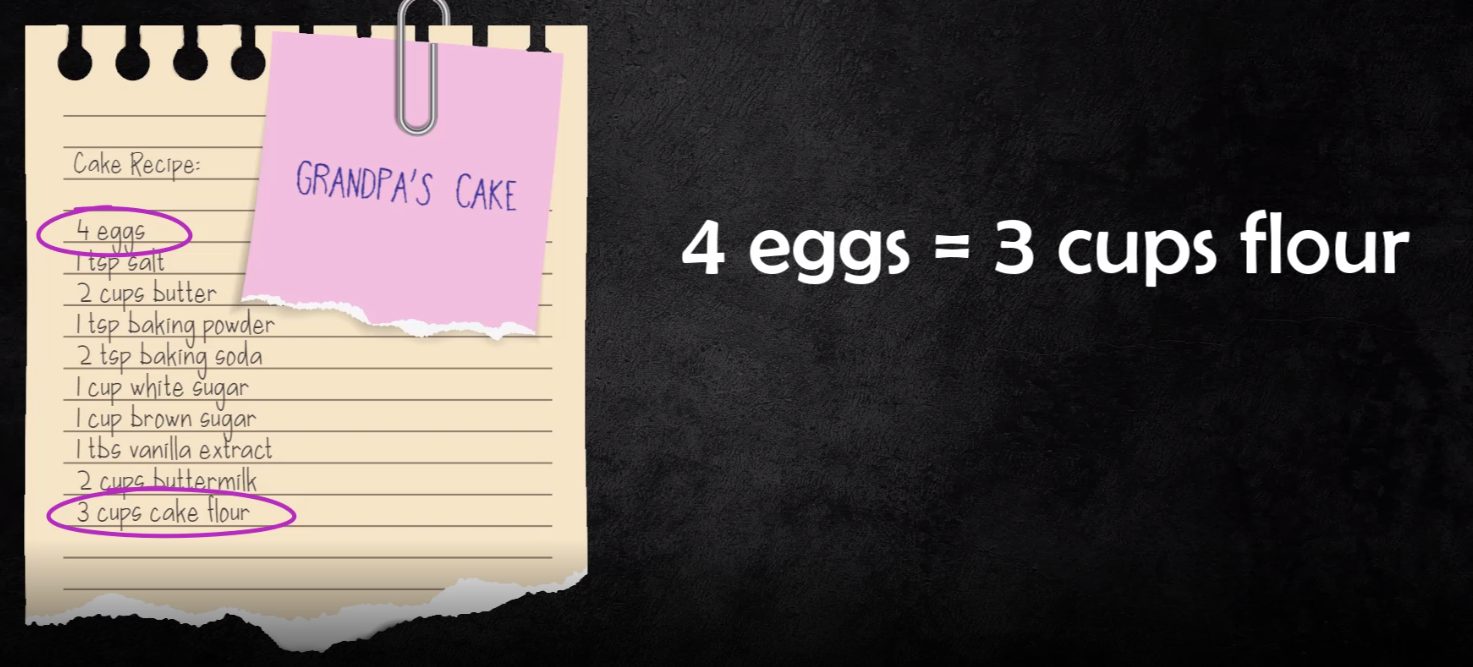How-To Guide for Completing One Step Conversions
Step 1: Read the Problem
First, carefully read the problem you have been given. Make sure you are able to identify the known value you are starting with as well as the desired units you will need to convert it to.
Sample Problem:
Alex wants to make a cake using his grandfather's recipe. The recipe calls for four eggs and three cups of flour, but he only has two eggs! If he converts the recipe to use only two eggs, how many cups of flour should he use?
In this case:
- The known value is - 2 eggs
- The desired units are - cups of flour

Step 2: Identify the Conversion Factor
Next, you need to identify the conversion factor you will use to complete the problem. This should connect the units you are starting with to the units you need to convert to.
In the sample problem, we need to connect eggs to cups of flour, so the conversion factor will be: 4 eggs = 3 cups of flour.

Step 3: Write Down the Known Value
Now you can set up the math problem. Start by writing down the known value.
In the sample problem, the known value is the number of eggs Alex has: 2 eggs

Step 4: Write the Conversion Factor
This next step is the most important when completing a conversion problem, and it is important that you get it right!
The conversion factor is a ratio that allows you to convert back and forth from any value of either of the units that it connects. In order to use a conversion factor, we multiply!
Next to the know value, write down the conversion factor as a fraction, with one value on top of the other. There are two possible ways to write this fraction. How do you know which value to put on top? Make sure that the units that match your known value are on the bottom so they will cancel out!
In the sample problem, because our known value's unit is eggs, the conversion factor is written with cups of flour on the top and eggs on the bottom. This means that eggs will cancel, leaving only cups of flour.

Step 5: Find the Answer and Use the Correct Units
Now you are ready to do the math. When you write out the final answer, make sure to include the correct units. If your numbers are not easy to work with, feel free to use a calculator to ensure accuracy.
In the sample problem we would multiply 2 x 3 then divide by 4, resulting in 1.5 cups of flour as our final answer.
